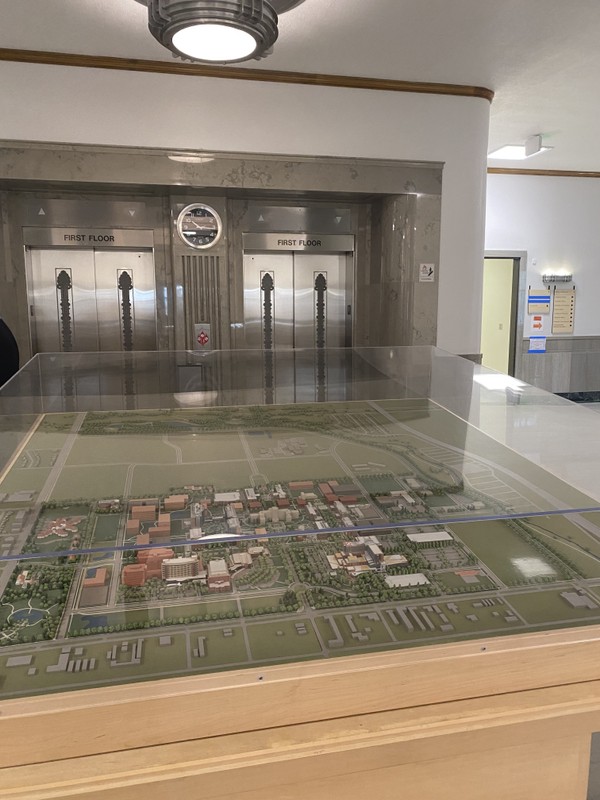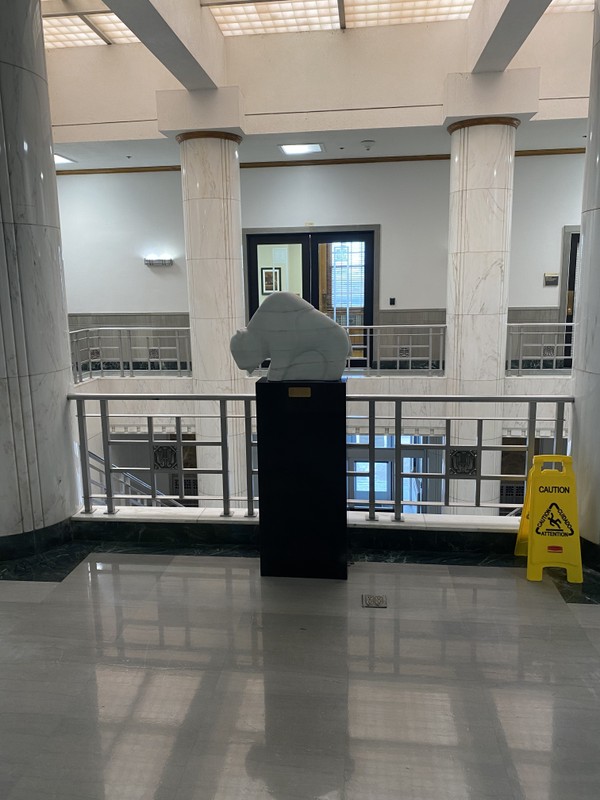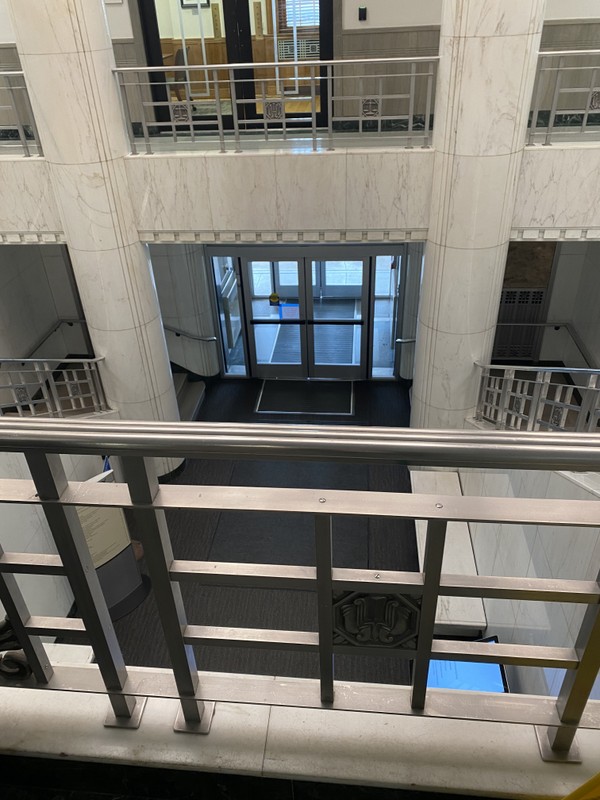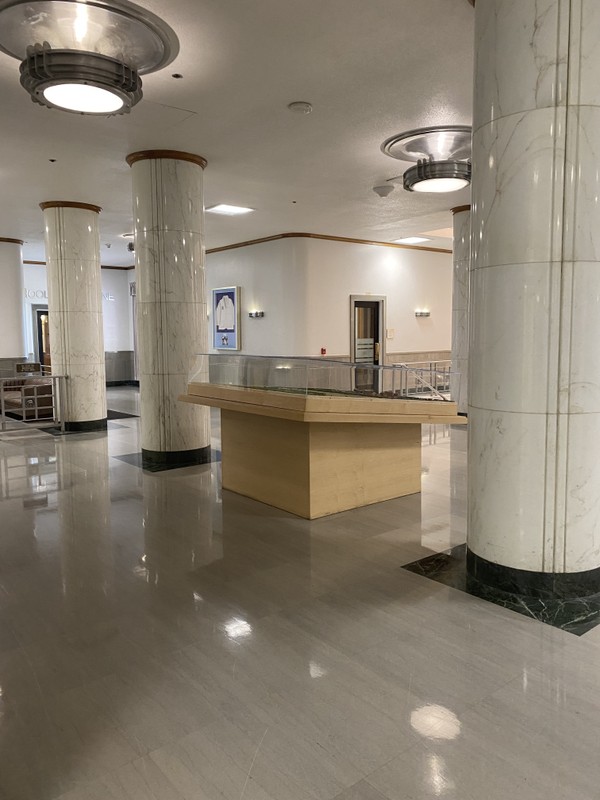This entry includes a walking tour! Take the tour.
Introduction
Text-to-speech Audio
Fitzsimons Army Medical Center acted as a U.S. medical post in Aurora, CO for military personnel beginning in 1918. The medical center operated as a self-sustaining institution with a permanent hospital erected in 1937, Red Cross building, and with a staff of about 5000 civilian, military, physician, and nurse personnel. While most of the Mission Revival styled buildings were torn down to make room for Anschutz Medical Campus, the army center is remembered by the Fitzsimons building hospital, the Post Chapel, guard houses, Generals Park, Colonels Row, police force in building 400s, the Fisher House, and Beehive memorial. Fitzsimons' legacy as a military teaching hospital continues with research in the Fitzsimons Hospital and the modern Anschutz Medical Campus is educating and graduating future physicians and researchers. Fitzsimons Army Medical Center officially closed in 1996 and ended as the nations' prominent military medical post during World War 1 and 2, and the Vietnam War.
Images
Model of Fitzsimons Army Medical Center

Inside Fitzsimons Building Hospital

Inside Fitzsimons Building Hospital

Inside Fitzsimons Building Hospital

Aerial View of Fitzsimons Army Medical Center

Beehive Memorial

Colonel Row

Denver Fisher House

Guard Houses

The Post Chapel

Red Cross Building

Backstory and Context
Text-to-speech Audio
Fitzsimons Army Medical Center experienced several name changes during its operation. Named U.S. Army General Hospital No. 21 during the hospitals opening in 1918, No. 21 treated World War 1 military personnel suffering from tuberculosis in temporary structures. Following the death of the first American officer Lieutenant William-Thomas Fitzsimons, the name changed to Fitzsimons General Hospital July 1, 1920. Continuing to treat military personnel suffering from tuberculosis in temporary structures, the hospital entered a new era of modern medicine when Building 500 also known as the Fitzsimons Hospital was erected as a permanent structure in 1937. Formally dedicated December 3, 1941, Building 500 as a teaching hospital opened the post to innovative medical and surgical services including open heart surgery, women’s obstetrics and gynecology, orthopedic surgery, and continuing tuberculosis care. Entering the 1950s as the largest Military Hospital Post in the nation, the name changed to Fitzsimons Army Hospital and in 1960 to Fitzsimons General Hospital.
The 1950s and 60s fostered decades of specialized training by the School for Medical Department Enlisted Technicians for medicine, surgery, dental, laboratory, and X-ray. Fitzsimons General Hospital focused on medical services of electro-cardiograms, pneumo-thorax, gastrointestinal, and women’s medical solarium. The post also boasted the Blood Plasma Station’s largest liquid processing center in the nation with a Red Cross mobile unit delivering plasma to other military posts. March 1, 1973, Fitzsimons General Hospital transitioned to Fitzsimons Army Medical Center and focused its treatment on military personnel during the Vietnam War. The largest Optical Fabrication Laboratory in the world moved to Fitzsimons and medical services provided care for active military and retired personnel with 56000 clinic visits and over 15000 people admitted by the 1980s. Through each name change, Fitzsimons Army Medical Center entered a new era of medicine, technology, and innovation. At the time of the posts closure in 1996, the medical center achieved notability in tuberculosis treatment and as a military teaching hospital treating the nations military personnel. Although most of the buildings were torn down its legacy as a teaching hospital welcomed Anschutz Medical Campus which is graduating future physicians and researchers each year.
The Mission Revival architectural style buildings with stucco exterior, red tiled roof, and overhanging eaves unified Fitzsimons and today their distinct architecture juxtaposes the modernity of Anschutz Medical Campus. Inside the architecturally distinct buildings medical innovation took place among the surgeons, physicians, technicians, and nurses that both trained and graduated from the hospital. The Fitzsimons Army Medical Center functioned as a comprehensive medical center with class two medical activity under The Surgeon General of the Army. As a self-sustaining Army installation, the post occupied 605 acres, 287 buildings, and 93 structures and facilities. During the Vietnam War, half of the 2000 patients were evacuated from Vietnam and Fitzsimons cared for around 700 Vietnam returnees at any given time with the remainder being treated as outpatients. At the time of the Vietnam War, Fitzsimons Army Medical Center had 1,600 civilian employees, 2000 military personnel, 500 officers, 200 physicians, and 216 registered nurses. The 1960s and 70s sustained large numbers of nurses, but during World War Two Fitzsimons experienced a nurse shortage that prompted requests for 50000 Women’s Auxiliary Army Corps (WAACS). WAACS were assigned to care at treatment installations around the world and lived on the post in buildings near the nine-hole golf course.
Fitzsimons’ nearly ninety years of operation developed the former Gutheil Nurseries into a self-sustaining center with paved streets and sidewalks, a police force, fire department, stores, restaurants, power plant, laundry, chapel, golf course, tennis courts, athletic field, and housing. Its notoriety as a tuberculosis treatment and recovery center continued until the post’s closure in 1996, and its medical evolution fostered eras of therapeutic treatments, preventative care, laboratory research, and innovative surgeries for the nation’s military personnel.
Sources
- Aurora Historical Society. March 1980 Vol. 5, No. 2. Aurora, CO
- “Vet’s Life Goes on Despite Loss of Leg.” The Stethoscope, September 29, 1961.
- “Fitzsimons’ historic past, redevelopment clash several buildings’ fate up to Aurora council.” The Denver Post, July 5, 1999.
- A Guide to Aurora Historic Preservation Landmarks. May 28, 2020. (36) https://issuu.com/aurorahistoricsites/docs/historic_landmarks_brochure_web
- Johnson, Elizabeth. Historic Aurora Walking Tour Fitzsimons Army Medical Center. Aurora, CO. 1983.
- Payne, Emily Thompson. “Fitzsimons General Hospital, Neuropsychiatric Ward.” Historic American Buildings Survey. August 2009.
- Stewart, John S. The Story of a Great Institution, 1918-1938. No. 1 Veterans of Foreign Wars of the United States, 1938.
- Colorado Welcomes You to Fitzsimons General Hospital Guide. 1961
- “Five Nurses Begin Course.” The Stethoscope. January 18, 1963, Vol. 20 No.3.
- Fitzsimons General Hospital Denver, CO. editor James E. Griffin Capt. Med. Adm. Corps. December 1943
- “Aurora Landmark Properties Nomination Form.” City of Aurora Historic Preservation Commission. 8/1/1999. LM-Nomination-15-Red-Cross.pdf (auroracohistoricalsociety.org)
Picture taken October 19, 2021
Picture taken October 19, 2021
Picture taken October 19, 2021
Picture taken October 19, 2021
Aurora History Museum
Aurora History Museum
